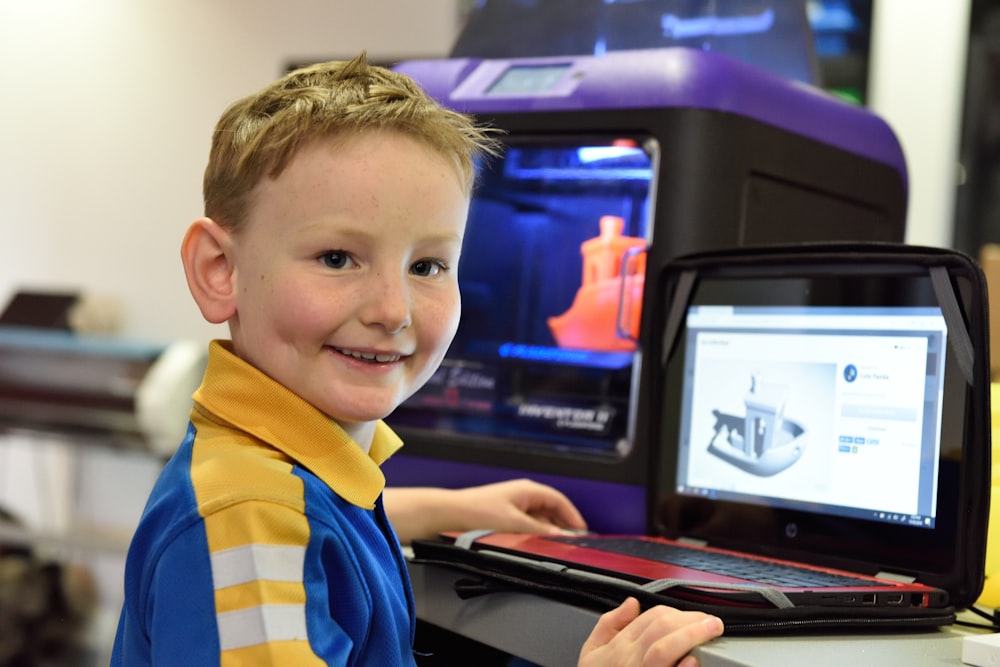Hello All,
“It’s a tool, not a toy” is a common phrase within elementary school classrooms. When using technology in the classroom with early primary students, this idiom becomes increasingly poignant. Technology can easily be viewed as a toy, a distraction, or a way to appease young learners. While these perspectives may be true, technology has the potential to be a powerful educational tool for young learners.

(source: https://unsplash.com/photos/q6uQFIJ1CqY)
A study conducted by the University of Michigan-Dearborn analyzed the implementation of technology within the university’s Reggio Emilia inspired teacher education program and on-campus early learning centre. The Reggio Emilia philosophy values children as agents of knowledge construction. The philosophy recognizes that children hold their own histories and culture which offer each of them a unique lens when accessing new information.
Children at the university’s early learning centre were afforded the opportunities to access information and engage with their peers in knowledge construction through various forms of technology including computers, cameras, video camera, scanners, and, of course, the internet. Hong and Trepanier-Street (2004) identified four uses of technology within a Reggio Emilia inspired early years program:
(a) representation and organization of ideas in a different medium, (b) communication of ideas and collaboration among members of a specific learning community, (c) visualization and reflection on thinking of children and teachers, and (d) extension and communication of consolidated learning to the broader community.

(Source: https://unsplash.com/photos/dYSH1AS7bFw)
(p.88)
The Reggio Emilia philosophy proposes that when provided with the time and space to play and explore, young children are able to think with creativity and ingenuity; however, their ability to physically express these thoughts can be impeded by their fine motor control. Hong and Trepanier-Street (2004) found that technologies such as KidPix and Kidspiration enabled children to better represent their thoughts and understandings of the world.
As noted in past blog posts, documentation of learning is a large component of the Reggio Emilia philosophy. Children and educators are intended to make learning visible via photos, videos, and anecdotal notes. The purpose of the documentation is not so much to showcase a polished, finished product; instead, learning displays are created to engage learners, educators, and the community in reflective thinking–valuing process over product (Hong & Trepanier-Street, 2004). Throughout the study, the teacher candidate and mentor teacher would switch roles with one teaching while the other documented using digital cameras and videocameras. The educators were then able to go back and reflect and collaborate together to create extension lessons within an emergent curriculum. Hong and Trepanier-Street (2004) also noted how documentation opened up communication with parents and the larger community including administrators and policymakers because it provided insight into the learning that occurred within the classroom. The researchers suggested that documentation displays helped children to feel pride in their work which may be true; however, within the Reggio Emilia philosophy the role of the child throughout documentation of learning goes beyond feeling pride. While Hong and Trepanier-Street (2004) described the educators as viewing children as powerful and competent learners, the importance of the revisiting, reflecting, and knowledge construction of the children seemed to have been missed. When working with young learners we must ensure that their voices are not only heard but listened to intently.
Reference
Hong, S. B., & Trepanier-Street, M. (2004). Technology: A tool for knowledge construction in a reggio emilia inspired teacher education program. Early Childhood Education Journal, 32(2), 87-94. doi:10.1007/s10643-004-7971-z

trideout
Hi Ashley,
From my personal teaching experience, documentation has completely transformed the way in which my students view their learning. My students are so eager to share their learning with their families and are constantly asking if they can document what they have created. I also have seen how much it has strengthened the home, school connection by families taking a more active role in their child’s learning journey.
Trisha
mmeemilylacock
Hi Ashley,
I catch myself saying “it’s a tool, not a toy” with my learners on the daily!
I find that EC learners always need a brief discussion about the intent and purpose behind why we introduce new tech (or any tool) to them. In addition to this, I always try to allow some time to “play” with the new technology that has been introduced. It helps with management during productive periods as learners are less likely to give in to the temptation of playing and finding themselves off-task.
What are your thoughts on this? Do you grant your learners some time to explore new tech or is your expectation that they get to using it right away?
EJ